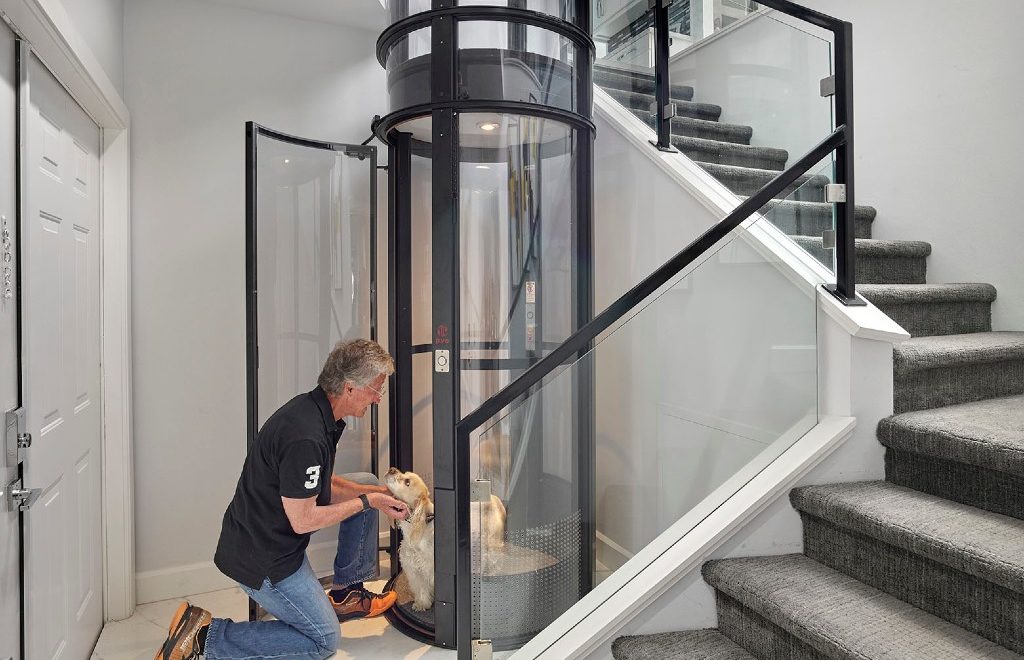Choosing the right mobility solution for a multi-level home often comes down to practical considerations, such as cost, convenience, and long-term needs. Stairlifts are typically more affordable and easier to install, while home elevators offer greater accessibility and can accommodate wheelchairs or multiple users at once. These factors make both options attractive, but the best choice will depend on specific mobility requirements and home layout.
People researching stairlifts vs home elevators are often weighing immediate needs against future plans. Some look for a straightforward stairlift to maintain independence, while others want the flexibility and added value a home elevator can provide. Insights into the key differences between stairlifts vs home elevators can simplify this important decision.
Whether the priority is aging in place or accommodating a range of users, understanding the pros and cons of stairlifts vs home elevators helps homeowners confidently invest in the right option for their unique situation.
Understanding Stairlifts
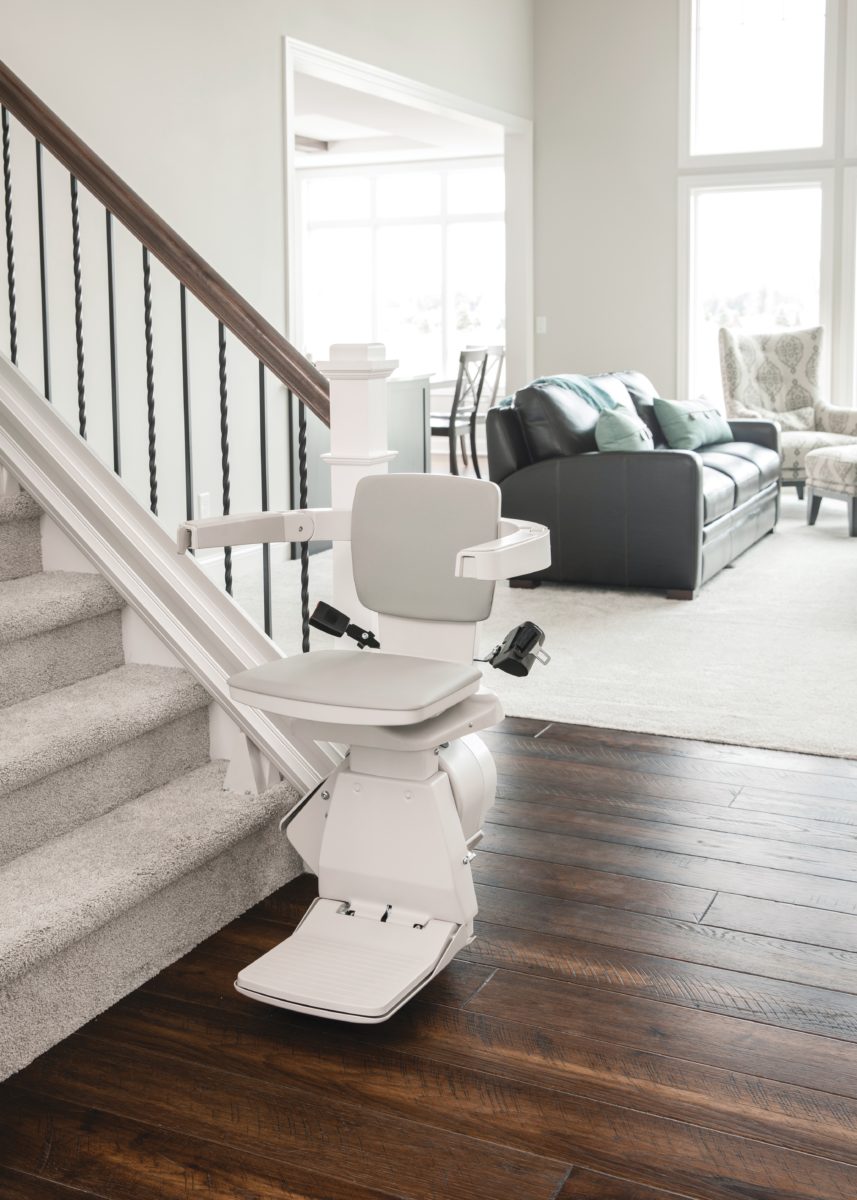
Stairlifts are mechanical devices designed to help people with limited mobility move safely and comfortably up and down stairs. They address everyday challenges in multi-level homes by providing a reliable alternative to climbing steps.
How Stairlifts Work
A stairlift consists of a chair or platform attached to a rail, which is securely mounted along the staircase. The user sits on the chair, fastens the seatbelt, and operates a simple control switch to move the lift. Electric motors power the system, allowing smooth and steady movement between floors.
Safety features, such as sensors, footrest obstruction detection, and emergency stop buttons, are standard. Most models operate on rechargeable batteries, ensuring functionality during power outages. Remote controls are often included, enabling the stairlift to be sent up or down when not in use.
Routine maintenance keeps the lift running smoothly. Key components, such as the rail and the motor, need periodic checks by a technician. With basic care, stairlifts typically have a long service life and minimal mechanical issues.
Types of Stairlifts
There are several types of stairlifts to accommodate different staircases and user needs. The two main styles are straight stairlifts and curved stairlifts.
- Straight stairlifts: Designed for stairs without bends or landings. They are generally more affordable and quicker to install.
- Curved stairlifts: Customized for stairs with turns, intermediate landings, or spiral steps. They require precise measurements and custom rails, making them more expensive and requiring a longer installation time.
Some models offer outdoor stairlifts for porch or garden steps. Others come with specialized seat designs, folding mechanisms, or weight capacities for specific user needs. The right choice depends on staircase layout, user requirements, and budget considerations.
Installation Process for Stairlifts
Stairlift installation begins with a professional assessment of the staircase and home environment. Measurements are taken to ensure the correct fit, especially for curved or unique stairways.
For straight staircases, installation is typically fast and can often be completed within a few hours. Curved stairlifts take longer due to custom rail fabrication.
Installers secure the rail to the stair treads, not the wall, minimizing structural changes. After the lift is in place, technicians test its operation and demonstrate safe usage for household members. Minimal disruption is involved, and most homes do not require any major modifications. Stairlifts can also be removed with minimal damage if no longer needed, making them a flexible option.
Overview of Residential Elevators
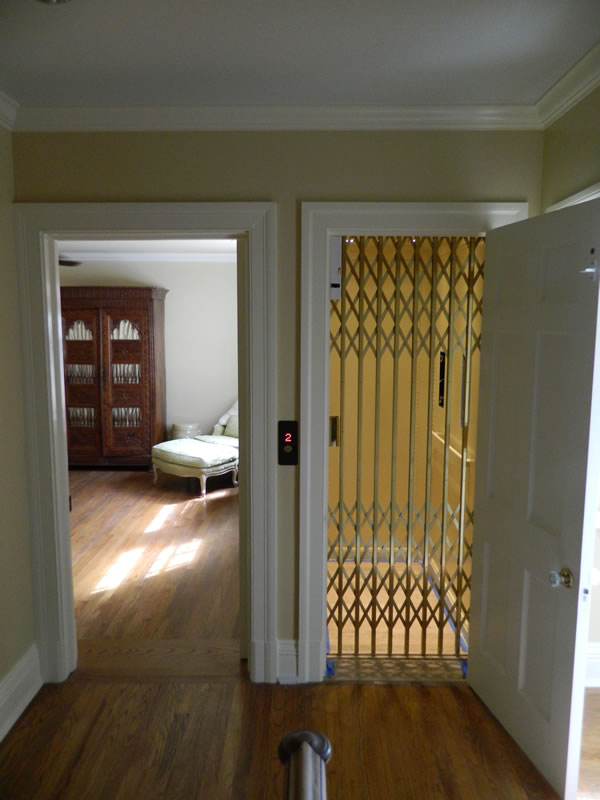
Residential elevators offer a convenient way for homeowners to move safely between floors, addressing mobility concerns and providing long-term accessibility solutions. These systems come in several types and can be customized to fit the design and space constraints of many homes.
How Home Elevators Operate
Home elevators use various mechanical systems to travel vertically between floors. Most residential units run on electric motors, cables, or hydraulic pumps, providing smooth and efficient movement. Unlike commercial elevators, home models typically use simpler controls and lower speeds, designed for a quiet and comfortable ride.
A standard home elevator features a cab, door system, call buttons, and a drive system. Safety features like emergency stop buttons, battery backups, and interlocks come standard on quality models, prioritizing user safety at every step. Control panels are placed at accessible heights for convenience.
In addition to automatic door systems, residential elevators often include sensors to prevent operation if doors are open or an obstruction is detected. Some models offer options for keypads, phone integration, or remote monitoring.
Varieties of Residential Elevators
There are several popular types of residential elevators:
- Hydraulic elevators: Use a piston beneath the cab and are known for smooth operation and quiet performance.
- Cable-driven elevators: These use a system of cables and counterweights, making them a common choice for taller homes or multi-story installations.
- Pneumatic (vacuum) elevators: Rely on air pressure to move the cab between floors, requiring little structural modification and occupying minimal space.
Each elevator type varies in energy usage, speed, capacity, and maintenance needs. For instance, hydraulic models tend to require more space for machinery, while pneumatic elevators work well in smaller residences. The right choice depends on a homeowner’s priorities, whether that is space, installation complexity, or long-term service.
Some elevators offer customizable cab sizes, finishes, and door configurations to match home décor. Optional features, such as benches, handrails, and custom lighting, are available from many manufacturers.
Elevator Installation Steps
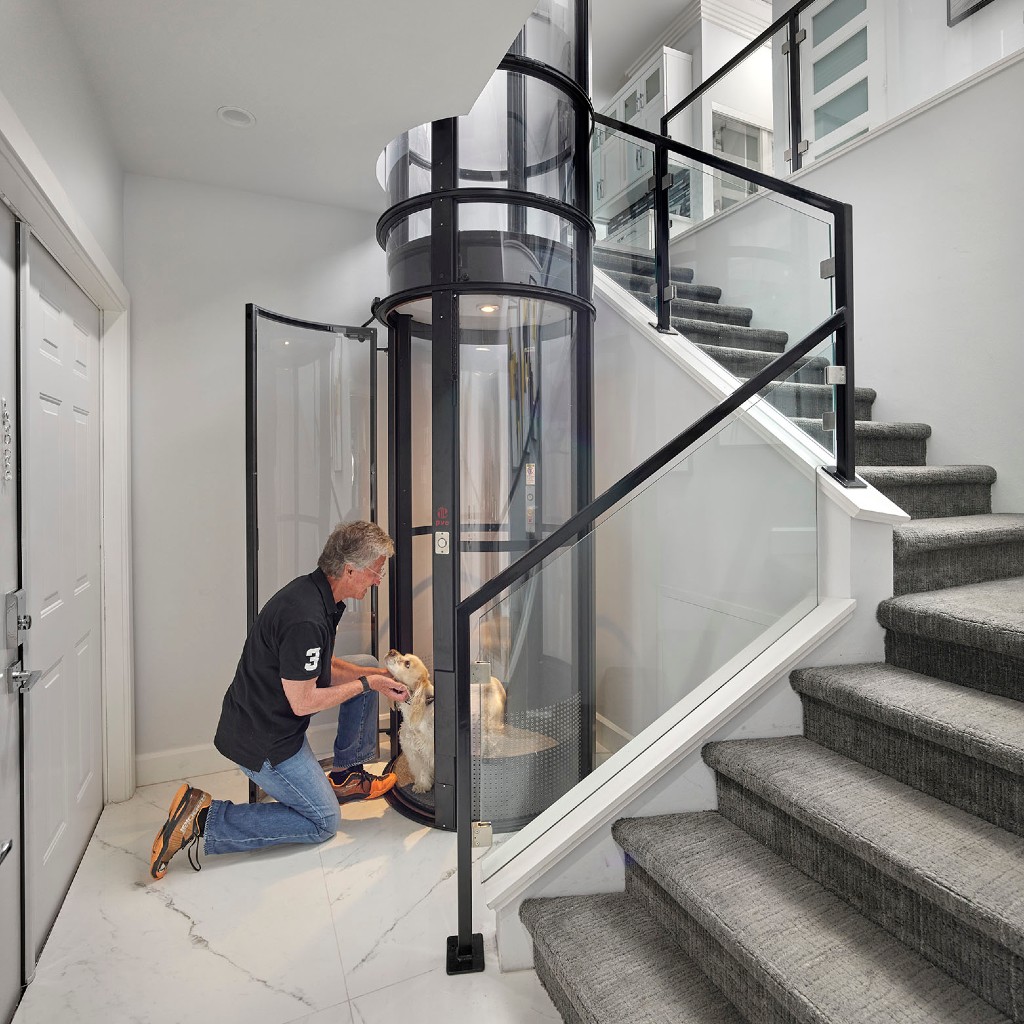
Residential elevator installation begins with a site evaluation, measuring available space and considering any required structural changes. The process involves selecting the elevator type, deciding on cab features, and reviewing local building codes for compliance.
Next, the area for the shaft or tube is prepared, which may require wall modifications, support beams, or additional electrical wiring. In hydraulic and cable-driven systems, a separate machine room may be required, while pneumatic elevators typically need only a small footprint.
Once the shaft and components are in place, installers fit the elevator cab, align the drive system, and connect electrical and safety systems. Professional inspections and operational tests are conducted to ensure everything meets safety regulations. Users receive training on daily operation and basic troubleshooting at the end of installation.
In many cases, installing a residential elevator can take anywhere from several days to a few weeks, depending on the home layout and the model chosen.
Comparing Functionality and Accessibility
Stairlifts and home elevators both address mobility concerns, but they differ in who they help, how easy they are to use, and the spaces they fit. Understanding these differences makes it easier to select the most practical solution for specific home and user needs.
Mobility Needs Addressed
A stairlift primarily benefits users who can transfer between sitting and standing without help but cannot safely use stairs. The device carries a person along an existing staircase on a motorized seat. It is well suited for individuals with limited lower body mobility but enough core strength to sit upright.
Home elevators, by contrast, support broader mobility needs. They can transport wheelchairs, walkers, and multiple people at once. People who cannot easily stand, balance, or who use mobility aids often prefer elevators, as they provide a more comprehensive accessibility solution and can serve multiple floors.
Those with progressive conditions affecting both standing and sitting mobility, or who require frequent transport of items, may find a home elevator more practical.
Ease of Use for Different Users
Operating a stairlift usually involves sitting in the seat, buckling a seatbelt, and using simple controls. Most stairlifts come with armrest buttons or a handheld remote. However, users must safely transfer on and off the seat at each end, which can be difficult for those with severe balance or strength challenges.
Home elevators typically offer push-button controls that require little physical effort and can transport a standing person, wheelchair, or even a caregiver at the same time. The cabin is enclosed and stable, making it safe for people with poor balance or limited dexterity. Elevators have fewer transfer requirements, making them suitable for users with advanced mobility limitations.
For households expecting changing needs or multiple users—such as visitors with mobility devices—home elevators offer greater flexibility and inclusivity.
Space Requirements
Stairlifts require attachment to an existing staircase. They are compact and do not require major structural changes, but do reduce usable stair width. For narrow or curved staircases, models are available, though installation may become more complex or costly. This makes stairlifts a reasonable fit for smaller homes or those with limited space.
Home elevators need a dedicated shaft or enclosure, often meaning a larger renovation to create sufficient space, especially in multi-story homes. Installation can impact room layouts or require giving up space in a closet or hallway. However, once installed, elevators do not take up stair space and can be positioned for convenient access to multiple levels.
When comparing these options, careful measurement and a home assessment are important to determine which system can be accommodated without compromising accessibility or daily living space.
Cost Considerations
When deciding between stairlifts vs home elevators, cost is often a leading factor. Key concerns include the upfront price, regular maintenance, and how each option can impact the home’s value.
Initial Investment
Stairlifts are generally the more budget-friendly choice. Most straight stairlifts range from $2,500 to $5,500, while custom curved models can cost up to $15,000 or more. Installation is typically quick and rarely requires any significant changes to the home’s structure. More details on stairlift pricing can be found on our blog.
Home elevators come with a higher initial investment. Basic residential elevator units start around $20,000 to $30,000, with prices climbing to $50,000 or more for larger or more advanced models. Installation is more involved, often necessitating home modifications such as a dedicated shaft, electrical work, and additional permits.
Ongoing Maintenance Expenses
Maintenance is an essential part of ownership for both devices. Stairlifts typically require annual servicing to keep their mechanical parts running smoothly, with yearly costs usually ranging from $100 to $300.
Home elevators need regular professional maintenance, which is more complex than stairlift servicing. Maintenance contracts for residential elevators often range from $300 to $600 per year. Elevators may also need periodic inspections, repairs, and component replacements—particularly as the equipment ages or if used frequently.
In both cases, costs can increase if the device is exposed to heavy use or if replacement parts are rare or imported.
Potential Return on Investment
The impact on home value differs between stairlifts and elevators. Stairlifts are usually considered removable and do not significantly raise a property’s value; in some instances, they may even be removed before a home is sold if buyers see them as unnecessary.
Home elevators can add to a property’s resale value, especially in markets with a high demand for aging-in-place features. Elevators are viewed as premium upgrades and can attract buyers seeking long-term accessibility. According to experts at Mobility Plus Colorado, an elevator may boost desirability and market appeal, making it a stronger investment for those planning to sell their home in the future.
Safety and Reliability Factors
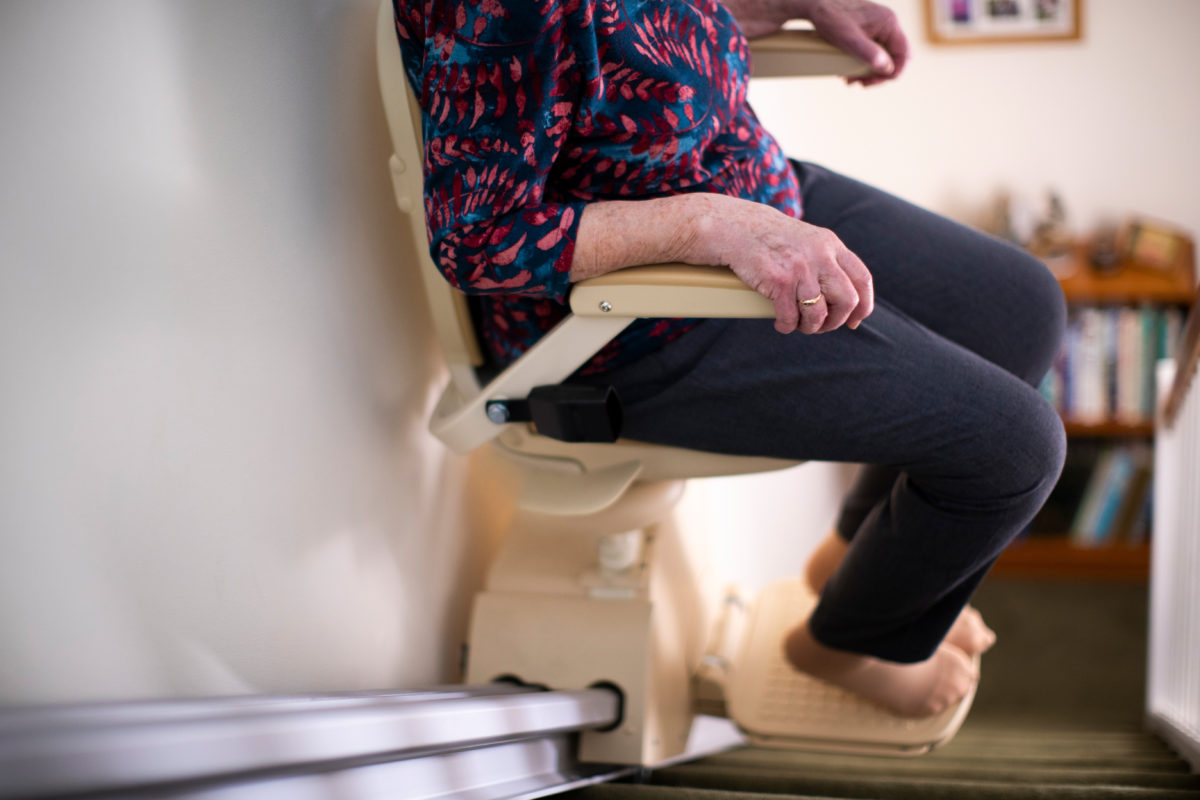
When choosing between a stairlift and an elevator, understanding the specific safety mechanisms, reliability during power loss, and emergency response options can provide crucial peace of mind. Each equipment type comes with unique built-in features tailored to home environments.
Safety Features
Modern stairlifts are outfitted with seat belts, safety sensors, and secure footrests. These features stop the lift if any obstruction is detected on the stairs. Most models ensure the seat swivels at the top for safe entry and exit.
Home elevators often include interlocking doors, emergency stop buttons, and automatic leveling. Their enclosed cabs limit the risk of falls. Audible alarms and battery-powered lighting add another layer of protection.
Both systems undergo strict safety testing. However, elevators often have more robust safeguards due to the potential risks involved with vertical travel. Regular maintenance is essential for both to maintain optimal safety performance.
Performance in Power Outages
Stairlifts usually come with battery backups that allow multiple trips even when the main power is lost. This ensures a user is not stranded mid-staircase during a blackout. The duration depends on the battery’s capacity and age, but many can complete several trips before recharging is needed.
Home elevators also feature battery systems, but their usage in a power outage is often limited to a single trip, usually to the lowest level. Hydraulic and traction elevators may differ in backup operations. Some require manually resetting or external help to resume function.
A summary table of power loss capabilities:
| Feature | Stairlift | Home Elevator |
|---|---|---|
| Backup Battery | Yes, multiple trips possible | Yes, usually one trip |
| Emergency Lighting | Sometimes | Often included |
| Manual Operation | Rarely required | Sometimes needed |
Emergency Rescue Options
Stairlifts are designed so users can manually move the seat to the nearest landing if the system stalls. Most models have easy-to-access levers for manual override. Because stairlifts run along open staircases, outside assistance is straightforward in an emergency.
Elevators are equipped with emergency call buttons or phones to alert help in case of entrapment. There may be a key-operated release or external manual lowering systems, depending on the model and installation. Some local regulations require a rescue plan for home elevators, especially for users with limited mobility.
While stairlifts enable quick manual egress, elevators require more formal rescue solutions. Residents should ensure that anyone who may need to assist is familiar with the proper procedures for their equipment type.
Impact on Home Layout and Design
Mobility solutions like stairlifts and elevators influence both the appearance of the home and the extent of changes needed to existing structures. The choice between the two often depends on available space, desired visual impact, and the complexity of installation.
Aesthetic Integration
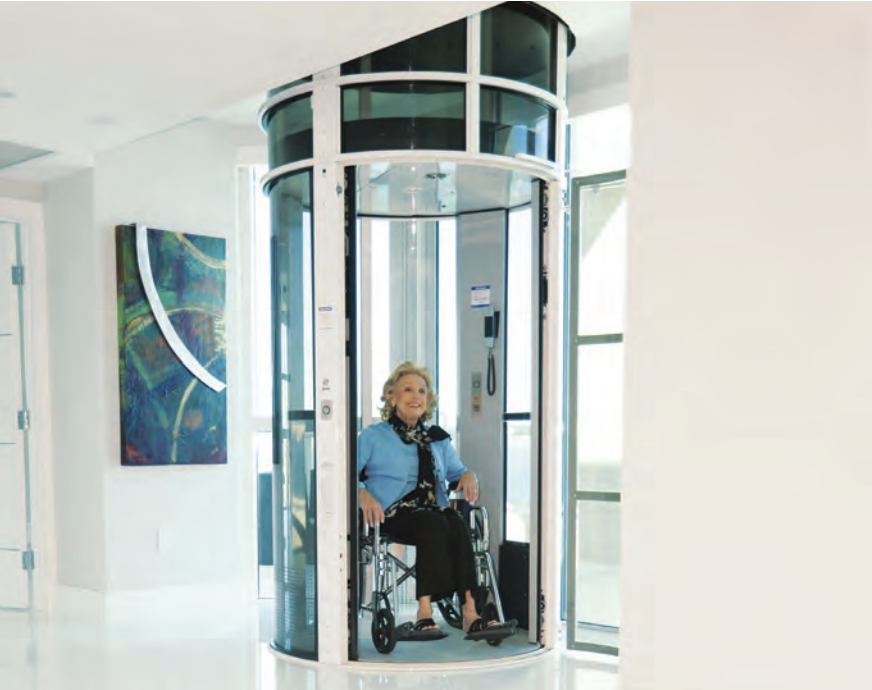
Home elevators tend to offer greater options for customization, including finishes, door styles, and lighting choices. This allows the elevator to blend in with or enhance existing interior décor. However, elevators typically require a dedicated shaft or enclosure, which can become a focal point in the home and may limit design flexibility in certain spaces.
Stairlifts, on the other hand, are usually mounted to an existing staircase without major alterations to walls or floors. Modern stairlifts are available in several colors and designs, but they are more noticeable than elevators since they run along the stairs’ path and can’t be fully concealed. For homes with narrow or curved staircases, stairlifts must be specifically fit, which may affect the look of the stairway, but keeps the rest of the house unchanged.
Structural Modifications Required
Installing a home elevator generally demands significant modifications. Construction teams may need to reinforce floors, cut through ceilings, and build a shaft. This process can be disruptive and takes up more space than a stairlift, making it better suited for homes with multiple floors and ample square footage. For houses undergoing renovation or new builds, elevators can be incorporated more smoothly.
A stairlift installation is far less invasive. Most models attach directly to the stairs, requiring minimal or no changes to the surrounding structure. There is often no impact on doorways, walls, or floors. This makes stairlifts a practical solution for homes that cannot accommodate large construction projects or for those needing a quicker, more affordable change to their mobility options.
Choosing the Best Solution for Your Home
Selecting between a stairlift and a home elevator means looking closely at the user’s mobility needs, financial resources, and how each option may serve over time. Installation space, lifestyle, and maintenance also factor into a confident choice.
Assessment of Personal Needs
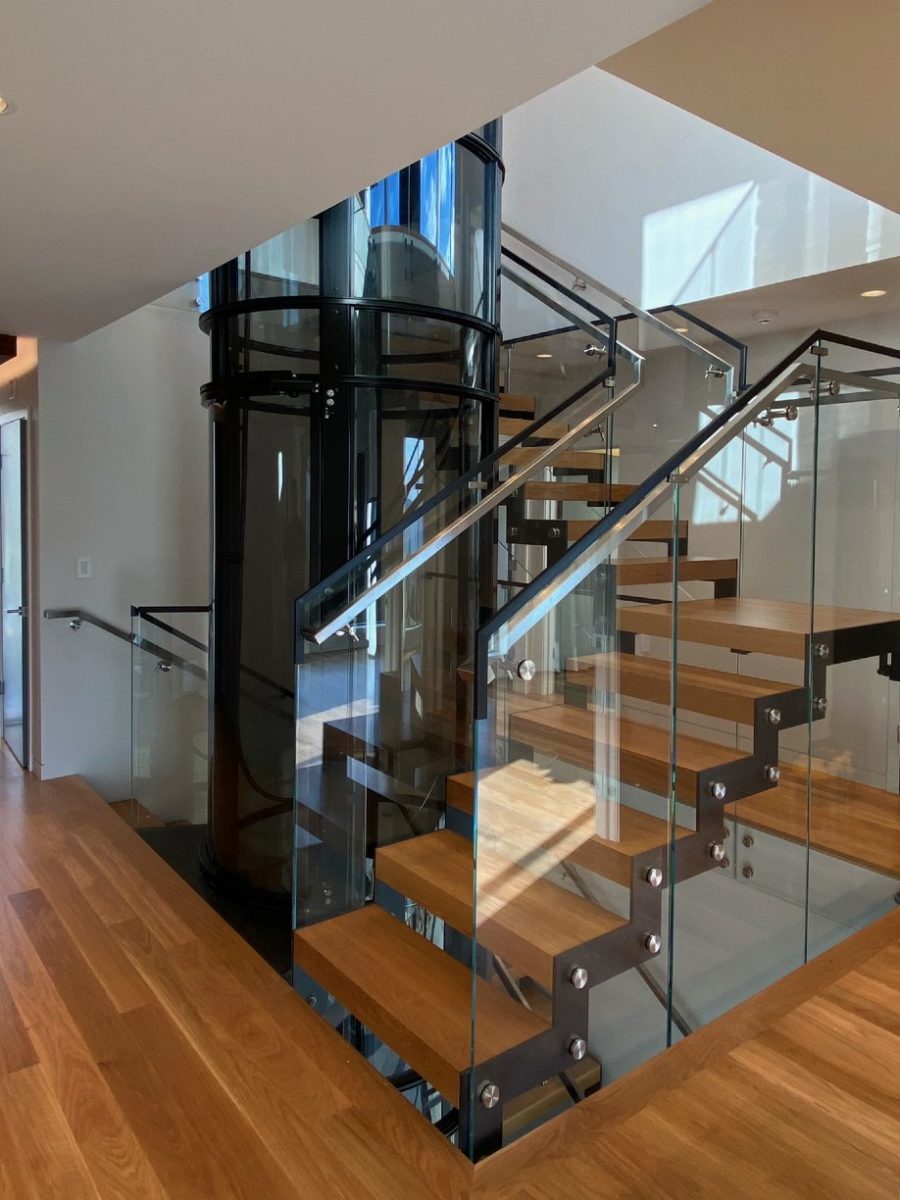
The best mobility solution starts with understanding the user’s unique requirements. Factors like physical ability, type of staircase, and frequency of use play a critical role.
A stairlift is often ideal for those who can sit and transfer independently, and it can work with many types of stairs, including curved or straight layouts. For users who use wheelchairs or have trouble transferring, a home elevator can provide a fully accessible, barrier-free ride between floors.
Key questions include:
- Can the user safely sit and stand without assistance?
- Is transferring to a seat difficult?
- Are there mobility devices, like wheelchairs, in regular use?
Considering both present and future health helps prevent costly renovations or rapid upgrades later on.
Budget and Financing Options
Cost is a decisive factor. A stairlift typically costs less than a home elevator, often starting at a few thousand dollars. Home elevators, depending on size and specifications, usually range much higher due to construction and installation requirements.
Typical price ranges:
| Solution | Starting Cost | Typical Installation Scope |
|---|---|---|
| Stairlift | $2,000 – $5,000 | Attaches to existing staircase |
| Home Elevator | $20,000+ | Requires shaft, extensive renovations |
Financing options may include home equity loans, financing plans, or grants for accessibility. Some suppliers offer monthly payment plans. It is advisable to request quotes from multiple vendors and compare included services, like maintenance or warranty coverage.
Long-Term Usability
Usability over time deserves careful attention. Installation of either option should suit long-term needs, both in physical health and changing household demands.
A stairlift might be sufficient for someone with mild mobility issues, but could become limiting if a condition progresses and wheelchair access is required. Elevators, by contrast, can accommodate a wider range of users and bulky items, including laundry or groceries.
Maintenance is another aspect: stairlifts usually need less complex servicing, while elevators involve stricter safety inspections and potentially higher long-term costs. By planning ahead, families can avoid the need for repeated upgrades or disruptive construction.
Conclusion
Choosing between stairlifts vs home elevators depends on several key factors, such as budget, available space, physical abilities, and personal preferences. Each option improves access at home but offers different features and benefits.
For limited spaces or curved staircases, a stairlift can be installed with minimal changes to the existing structure. It is generally a quicker and less invasive solution, making it a popular choice for many households.
A home elevator, on the other hand, provides greater flexibility for where it can be placed in a house and typically offers higher weight capacity. Elevators are often preferred by users who need to transport wheelchairs or accommodate multiple passengers, and can also add value to a home.
Key factors to consider:
| Feature | Stairlift | Home Elevator |
|---|---|---|
| Space Requirement | Minimal | More significant |
| Installation Time | Faster | Longer |
| Cost | Lower upfront | Higher investment |
| Accessibility Needs | Good for most; limited for wheelchairs | Best for wheelchair users or larger loads |
| Home Value Impact | Modest | Can increase property value |
Discussing individual needs with a mobility specialist ensures that people choose the right solution for their unique situation.
Frequently Asked Questions
Both stairlifts and home elevators can increase accessibility, but their benefits, costs, space requirements, and impact on resale value differ. Each option also offers unique features for customization and safety, depending on specific mobility needs.
What are the primary benefits of installing stairlifts vs home elevators?
Stairlifts generally offer a more affordable and quicker installation for homes with straight or slightly curved staircases. They are often preferred by those looking for a less intrusive option, as they attach directly to the staircase and do not require major structural changes.
In contrast, home elevators can transport multiple users or larger items and provide step-free access between floors. However, they involve a more complex installation process.
How does the cost of installation and maintenance for stairlifts vs home elevators compare?
Stairlifts usually cost less to purchase and install than home elevators. They involve fewer building modifications and can often be fitted in a matter of hours or a day.
Home elevators require substantial changes, higher installation fees, and often cost significantly more overall. Maintenance for elevators may also be more involved and expensive compared to stairlifts.
Which option, stairlift or elevator, typically requires more space within a home?
Elevators take up more physical space, often requiring a dedicated shaft or closet-sized enclosure. They may also require space set aside for machinery and access.
In comparison, stairlifts are mounted on existing staircases and generally have a smaller footprint. They allow most people to continue using the stairs for walking, since the rail and seat fold away when not in use. Information on space considerations can be found at Inclinator’s guide.
What are the safety features to consider when choosing between stairlifts vs home elevators for a residence?
Stairlifts offer safety belts, swivel seats for easier transfers, and obstruction sensors that stop the lift if something is blocking the path. They may also have backup battery power in case of outages.
Home elevators often provide interlocks on doors, emergency alarms, smooth start and stop technology, and backup battery systems. Both devices are designed with features to prevent unintentional movement and ensure user safety.
How do stairlifts vs home elevators differ in terms of their impact on a home’s resale value?
Elevators can positively affect a home’s resale value, particularly in properties catering to aging-in-place or luxury markets. Buyers may see a residential elevator as a long-term investment and a value-add.
Stairlifts, on the other hand, are considered more temporary and are often removed if a home is being prepared for sale. Their presence usually does not increase home value in the same way an elevator might.
Can stairlifts and elevators both be customized to accommodate specific disabilities or mobility needs?
Stairlifts are available with customization options such as wider seats, increased weight limits, and specialized controls for different dexterity levels. Custom rails can be built to fit curved or narrow staircases.
Home elevators offer greater potential for full customization, including size, door configurations, panel controls, and interiors. Both options can be adapted to suit the unique needs of the user.

